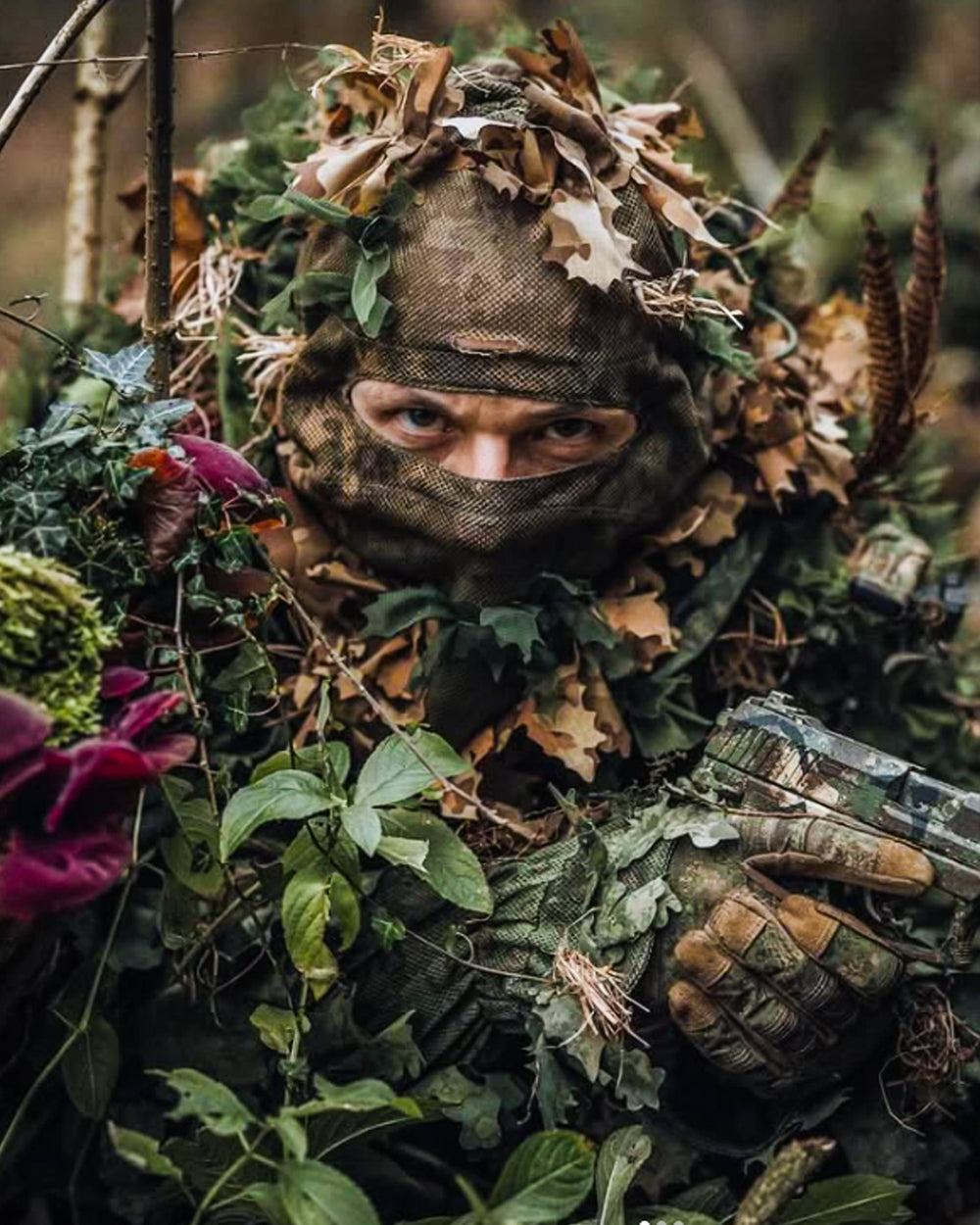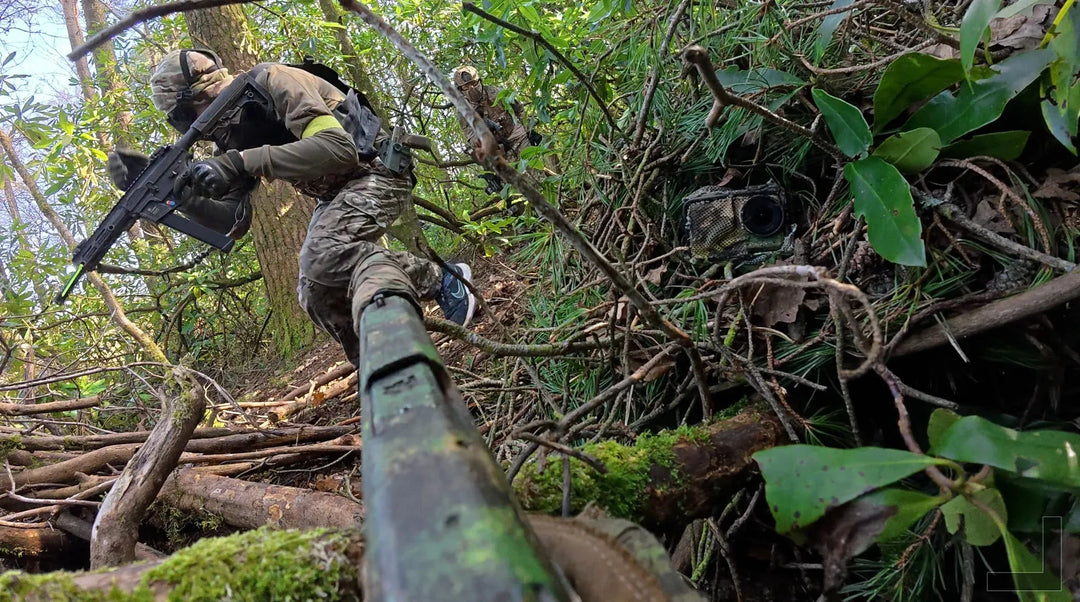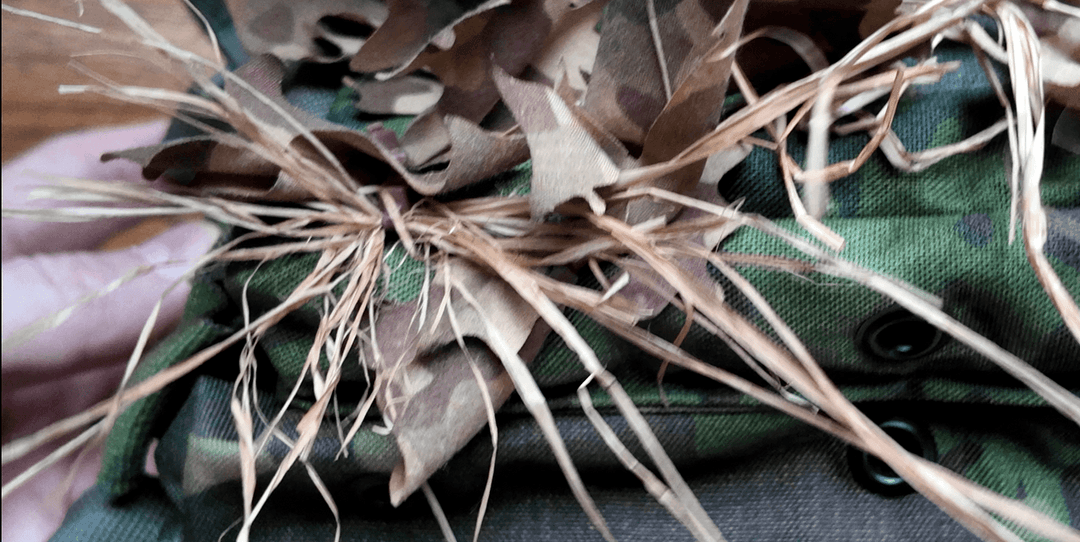I interview Troy, a Ukrainian Sniper on the frontline against Russia. We discuss War, Survival, and the realities of Modern Combat

I interview Troy, a Ukrainian Sniper on the frontline against Russia. We discuss War, Survival, and the realities of Modern Combat

The war in Ukraine has transformed modern warfare, especially for snipers who now operate in an environment dominated by drones, counter-surveillance, and rapidly evolving battlefield tactics. In this interview, I chat with a Ukrainian Special Forces sniper who shares his experiences, the evolution of sniping in the war, and the challenges he faces daily.
Motivation & Personal Journey
Kicking Mustang: Could you tell me a bit about yourself, and what inspired you to become a sniper.
Troy: We served a three-year contract before the full-scale war, training in different specialties within our regiment. The sniper section stood out as the most developed, so in 2022, another guy and I returned to our unit as part of the sniper team at the regiment level.
KM: What sort of training did you go through and what platforms do you use?
T: We had some basic training, but that was enough to start working immediately. At first, we used .308 rifles at ranges of 200–350 meters, but as distances increased, we requested and received .338 rifles.
KM: Has your role changed since the war began?
T: Before the drone era, sniping was much more universal, you could work from an open trench and take multiple targets per night. Now, sniping is a more specialised tool. Sometimes snipers can support where drones can’t, but overall, drone warfare has made it much harder to eliminate targets on the frontline.
KM: What does it mean to you, personally, to defend Ukraine in this war? How has your sense of duty changed over time?
T: For me, fighting this war means survival. If we give up, we will have Bucha all over Ukraine. We’ve seen this before, in the early 20th century, those who surrendered to the Soviets were eating their own children a decade later due to the Holodomor.
The only victory I see is the complete destruction and demilitarisation of Russia, a country that kills indiscriminately, shoots down its own and foreign passenger planes, and destroys the environment by sinking oil tankers. They launch ballistic missiles at sleeping families, lie endlessly, and take pride in it.
A man can’t choose his fate, but he can make the right decisions in the conditions given to him. They are ontological evil, and the only logical choice is to keep fighting. My sense of duty remains the same as it was at the beginning.
Life in the Trenches & Combat Experience

KM: What is a typical day like for you in a combat environment? What are the mental and physical challenges of being a sniper in the trenches?
T: Mentally, the longer the war drags on, the harder it gets to manage combat stress. I used to have a strong desire to experience war, but after being exposed to everything it has to offer, it has become a routine job.
The hardest part is infiltration and exfiltration. Sustaining yourself in extreme cold is tough, but proper clothing helps. Cover and concealment are everything — if they don’t know you’re there, they won’t target you with drones and artillery. But once they do know, you better have multiple layers of logs over your foxhole to withstand FPV drones and mortar fire.
Some positions offer good reinforcement but poor concealment, while others are the opposite. Your tactics must adapt accordingly.

KM: How has your approach to camouflage, concealment, and stealth evolved in response to Russian tactics and battlefield technology?
T: In a drone-heavy environment, timing is everything. A leaf suit won’t help if they spot your movement or thermal signature because you infiltrated across open ground in daylight or during rush hour at night, right after sunset. In fact, it could make you stand out more, since regular infantry don’t wear such camouflage.
The best way to determine the right time to move is to talk to the infantry unit responsible for that frontline section. Learn about enemy drone flight patterns, understand high-activity periods and be aware of which positions get shelled daily vs. which the enemy assumes are abandoned
This applies to conventional warzones like Donbas. However, in gray zones like the Dnipro islands near Kherson or Krynki, the approach is different. There’s more use for small-unit tactics, and you can move dynamically in your leaf suit rather than just using it for firing position concealment.
KM: You talk about the importance of timing for movement and concealment. Can you explain this a bit more? What techniques do you use to time movement?
T: Now it’s almost impossible to get to the position without being spotted. Natural obstacles can help, such as moving via terrain folds or behind a high ground if it’s possible, also at warm periods fresh vegetation helps a lot. In some parts of a frontline it’s better to move at daytime, since night gives you no advantage due to abundance of thermal drones. In addition you having troubles in orienting and can’t find cover quickly in case of danger. In other parts it’s better to use night, because they don’t have many thermals, accumulating them in more important areas and rely more on day recognition.
KM: What are the biggest threats snipers face in this war? Is it drones, counter-snipers, artillery, or something else?
T: The biggest threat is drones, specifically Mavic-type drones, because they serve as the eyes for all other weapons. They spot you, then FPVs follow, and mortars start firing.
Recently, we encountered a new threat: the “Lightning” FPV plane, which carries an anti-tank mine. These devastate positions and vehicles caught in the open. A few of them recently wiped out a position next to ours.
Tactics & Equipment
KM: How often do you work with drone operators to coordinate sniper operations? Do snipers and drones complement each other?
T: Not often, but we’ve started working on it in our current deployment. We’ve found the right people for it. We want drones to help ground troops, including anti-drone FPVs that can be on direct radio contact in case of an attack by Mavic-dropped munitions.
KM: How do you handle a situation where a drone spots you? Do you hear them? What makes you realise you’ve been spotted? I only know how I react when I notice an enemy player during a stalk in airsoft events. I freeze and wait for an indication that they have either spotted me or not, and then react… Is it a similar situation for you with drones?
T: Overall there’s no universal decision if they spot you, all depends. If their reaction time is more than time needed to get to your final position then don’t stop. Or if there’s no proper cover nearby.
You can tell by different things. LPVO and magnifiers comes in handy: you see a drone at some distance, zoom in and check which direction he’s looking at. One time I spotted two drones near each other looking straight at me, I started running to the forest nearby and few minutes later FPV was chasing me, it went off against a tree while I was 20 meters deep into the forest. Or sometimes you don’t see drone at all but mortar starts shooting in your area, that’s a strong sign to find some cover because probably there is FPV already flying for you. Drones also use treelines and other distinct linear landmarks for orientation. So usually when you hear one — he’s just passing by, and when he does he won’t see you unless you’re in the open or moving too much. Or won’t at all because his camera is looking forward to the horizon. You also look from who’s side he came from. Drones usually hang above certain areas in visual scanning mode on minimal zoom and when something catches their attention — they zoom in and/or fly closer. Main thing that compromises you is movement, so just stop and listen is the first thing you wanna do when hear that buzzing. After some time you get to kinda feel the battlefield intuitively, knowing flying patterns of each side. But it very depends from place to place. Drops can work around 3km from a starting point, so locating where pilots are you understand if they can get you or not. FPV is a different story, their usual range is 5km, less often 10–15km, in some exotic cases it can be even 20km and more. But the closer it is to the frontline, the more of them you’ll see.
KM: Can you tell me about your secondary weapon system? Do you use a pistol or an SMG?
T: I had issued SMG, but it was lost at one crazy mission and we don’t risk to take it back because area is very hot and open. Basically guy who was carrying it was caught on fire by dropped munition and dropped it while extinguishing himself, then took only his main rifle and continued running. It was B&T APC-9k in 9mm. I also have a Beretta M9 which I carry when my main gun is .338 or .308. In previous team I had Sig P320, also a good gun.
KM: What is your longest confirmed kill?

T: My personal longest is 1240m at still target, there also was a moving guy at 900m who I got lucky to hit the head. I miscalculated the wind call but he came a bit further than I expected and caught it anyway. We are unusual snipers, we compete more on who got the shortest kill, lol. Can’t beat my friend who headshotted a dude on like 10cm with his 5,56. And it wasn’t a POW kill as some commentators will assume. For the last POW I had I gave food I brought for myself on a 4-day mission.
KM: Can you tell me about your NVG & thermal setup?
T: As NVG I have PVS-31 but now it’s broken so I use PVS-14. Thermal scopes I can recommend IRay HL Holo25, AGM Rattler 640/50 or similar models from IRay. AGM Sting IR 640 is also a good clip-on for 5,56. Only thing I don’t like about it is that it can’t record a video.
KM: How does wearing the KMCS Ghillie suit impact your effectiveness in the field? How does it compare to other concealment products you’ve tried?

T: KMCS is the best suit we’ve tried in this category. It provides excellent silhouette breakdown, blends well, and is still comfortable to wear with all my pouches on a plate carrier.
The only issue is the webbing on the cloak, it catches on sticks and rips when moving. Plus, in 95% of cases, you don’t need organic camouflage. We also love Ghosthood products and use them as another option depending on the situation.

KM: Have you tried cutting off the webbing? I remove about 50% of it on my personal suits. Also, I’ve experimented with lashing paracord instead , it doesn’t snag as much but still allows adding vegetation.
T: We haven’t cut it because the texture helps with camouflage.
KM: That’s interesting, a U.S. Army Ranger I spoke to about it said the same thing.
T: We don’t use organic vegetation, it falls off too easily.
KM: This is why I switched to leaf suits instead of traditional ghillie suits years ago. Natural veg wilts and falls off quickly in summer.
T: Yeah, sniper courses teach a 30–70 organic-to-artificial ratio, but it doesn’t work in real combat.
KM: How do you even use 30/70 in this environment? There’s barely any vegetation — just dead twigs and a few leaves.
T: Exactly. It doesn’t fit real-world conditions.
KM: Have you ever used thermal camouflage or heat-reducing materials to counter thermal drone detection?
T: We’ve used Fibrotex and several Ukrainian suits, but none of them work in 100% of cases. Some make you completely “cold”, but that can be a problem, instead of a white spot, a drone sees a black silhouette against the warm gray earth, which doesn’t help. Others trap heat and then radiate it from any small gap, making them less effective after movement.
Overall, these suits reduce the chance of being spotted from a distance, but they’re not a magic solution.

KM: How important is Infra Red Retardance or IR Compliance on your suits and clothing?
T: I see that all equipment brands pay much attention for their fabrics to keep camouflaging abilities under nods, but in my opinion it’s not that important. I see here an influence of GWOT era approaches to night target recognition, which mostly relies on spotting with NVG. But in modern combat, as I said previously, in 99% you will be spotted with thermals, that 1% when IRR fabric will save you from being noticed is highly rare occasion. Of course it’s not about products like KMCS where even slightest details can matter, since it’s only function is provide camouflage. But about uniforms and personal gear. It’s okay when you have this feature, but my point is that it’s absolutely not critical.
Psychological & Emotional Aspects
KM: How do you mentally prepare for missions that require extreme patience and precision under life-threatening conditions?
T: I don’t have a special method. In Ukraine, we have a saying: “The eyes are afraid, but the hands do.” You just act despite fear. The most anxious moment is during preparation and the drive to the drop-off point. Once I dismount and assess the surroundings, my mind switches to ‘cold mode.’
KM: You described the “cold mind” state when taking a shot. Can you expand on that mental shift — do you practice specific breathing techniques, visualisation, or other mental exercises to stay calm under pressure?
T: While taking a shot I’m only anxious about missing it. No mental exercises are used by me, I don’t need to deal with myself over shooting the enemy, I have a clear answer on what I’m doing here. Right before the shot I think about wind call and hold on movement if the guy is walking. I’m more anxious when they trying to kill me, in these cases pretty much nothing helps. It’s better to think fast and take right decisions than to concentrate on your fear and roll it like a snowball. The more personal references you have, the more you understand what’s going on.

KM: What is the most difficult shot you’ve ever taken, and what was going through your mind in that moment?
T: It’s hard to say. The shot itself is always easy, the difficult part is infiltration and sustaining your position. Psychologically, the mind is empty when taking a shot. If the target is visible for only a few seconds, there’s no time to think, just make the wind call and shoot. But if I have time, adrenaline kicks in. The more you shoot, the less it affects you. Successfully hitting a target boosts morale for days.
KM: What keeps you going during the hardest moments, when morale is low, supplies are tight, or the enemy is pressing hard?
T: I think about my girlfriend, my home, and the places I love in my city. Also, killing the enemy raises morale, it means your struggle wasn’t pointless today.

KM: You have shared some beautiful photos mate. The ones under the stars… There must be times at night, when it is quiet, when your mind jumps from a surreal state of calm before crashing back to the reality of war?
T: Mostly I just feel anxious of being spotted since I’m under the open sky
KM: I am sorry you have to experience this. You have my upmost respect.
T: Nah bro don’t worry, I’m okay. Thanks anyway. But you’re right, sometimes you can catch a strange feeling. When it’s winter night with stars. I feel like I’m on a moon or something
KM: I know you’re ok. But still… It really sucks.
Insight Into the War
KM: What do you wish people in the West understood about this war that they don’t see in the media?
T: Western militaries must understand that this war is unlike anything they’ve fought before. Many of their traditional approaches are outdated against a near-equal enemy. I’ve trained with Green Berets, SEALs, regular army units, and European SOF. Some adapt well, using FPVs and military-grade counter-drone tech, but many still underestimate the realities of modern war. There’s much more we can discuss, but that requires another interview.
My Final Thoughts
This interview provides a rare and unfiltered look into the modern battlefield through the eyes of a Ukrainian Special Forces sniper. The evolution of tactics, the psychological toll, and the need for new technology are reshaping warfare.
If you’re interested in more insights from Ukraine’s frontline, we may continue this conversation in a follow up interview.





